Yield Farming - Yearn Finance - Crypto Academy S5W3 - Homework Post for @imagen
Hey Steemians, I'm grateful to be a part of the third week lesson in season five of the academy.
I must say that this is another educational article leaving exposition on more wealth finance though a part of Defi known as Yield farming including several features, and parts of it. Below is my assignment sir.
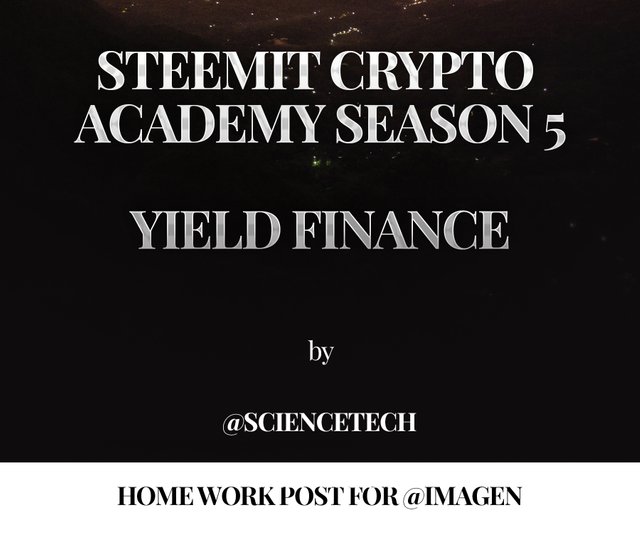

1. Describe the differences between Staking and Yield Farming.
What is yield farming.
Yield farming allows crypto investors to lock their assets in exchange for rewards. It allows crypto investors to profit from their investments.
It's similar to taking a loan from a bank and when paying back you pay back with interest. The bank in this contest is the crypto investors.
Yield farming functions based on an automated market maker (AMM) Model.
AMM removed the conventional order book which contains all the buying and selling orders in a cryptocurrency exchange. The AMM models rely solely on liquidity providers, who deposit funds into liquidity pools. These pools are the basis of most decentralized finance marketplaces (DeFi) where users borrow, swap, and lend tokens.
The DeFi users pay trading fees to the market places; the marketplace shares the liquidity providers based on their shares of the liquidity pool.
Staking:
This is is a way of pledging crypto assets as collateral in the case of networks leveraging the proof of stake algorithm. Staking is also a way that that cryptocurrency investors use to earn extra income.
How staking works
Users are expected to stake a fixed amount to become validators or they can participate in liquidity pools. Staking helps to secure the network and earn passive income.
The main difference between staking and yield farming is that in yield farming, the users are required to deposit their crypto funds on DeFi platforms while staking is the process of locking crypto currencies to receive rewards.
In staking:
- In staking, there is a set reward that is been expressed as an APY. It is around 5%, but it can be higher and it depends on the staking token and method.
- Its rewards are the network bonuses given to validators to help the blockchain reach consensus and generate new blocks.
- In staking, there is no impermanent loss if you stake crypto.
- Different blockchain networks need their users to stake their funds for a fixed period and a minimum amount required.
In yield farming:
- It requires a well-calculated strategy. It is not as precise as staking but it can yield greater reward up to 100% than staking.
- In yield farming, the rewards are determined by the liquidity pool and can fluctuate if there is a change in the price of the token.
- Impermanent loss can occur when the user's funds are locked in a liquidity pool and the ratio of the token in the pool is uneven.
- In yield farming, the users do not need to lock up their funds for a fixed period.

2. Login to Yearn Finance. Fully explore the platform and indicate its functions. Describe the process for trading on the platform (wallet connection, funds transfer, available options). Show screenshots.
In order to answer this question, I will be visiting the yearn website here is the link

- Then I click on connect wallet which gave me several options and I decided to make use of the trust wallet.
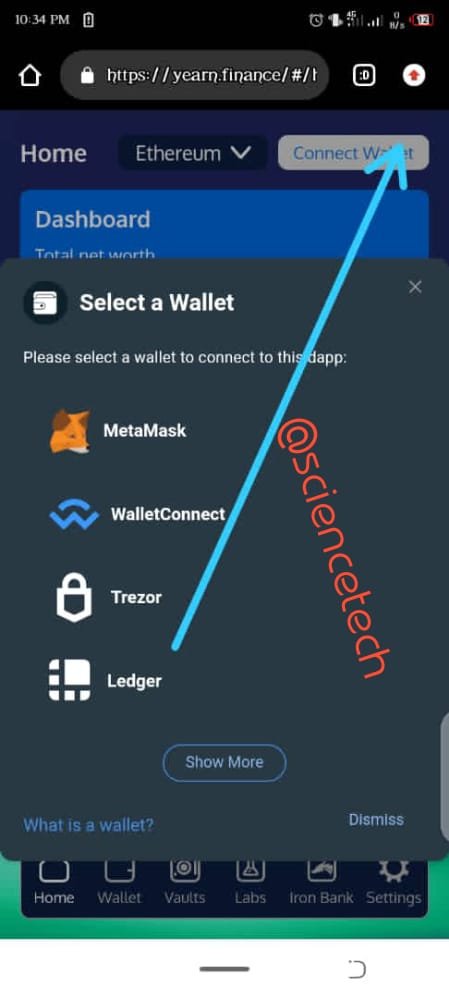
- After clicking on the trust wallet, I got a pop up from my trust wallet which I connected with it and it was connected
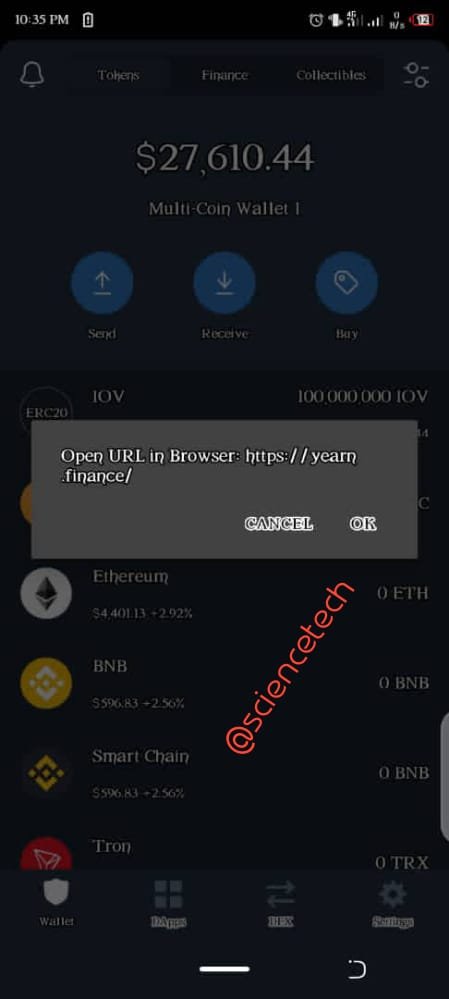
Lets get into further exploration using my system
YEARN VAULT
The yearn vault shows the AY of tokens and displaces the token with the highest APY. here you can deposit the token which you wish to use and it will be verified from your trust wallet.
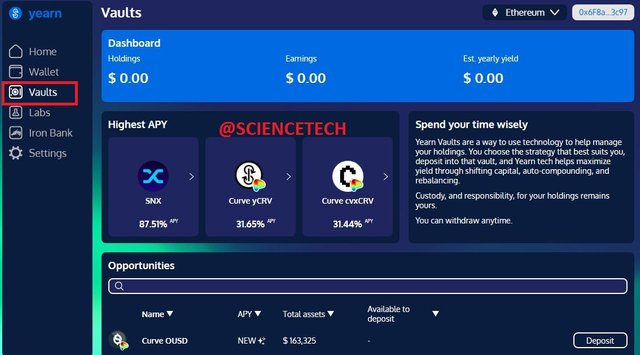
THE LABS
the lab functions just like the vault and also gives users the ability to lock their assets
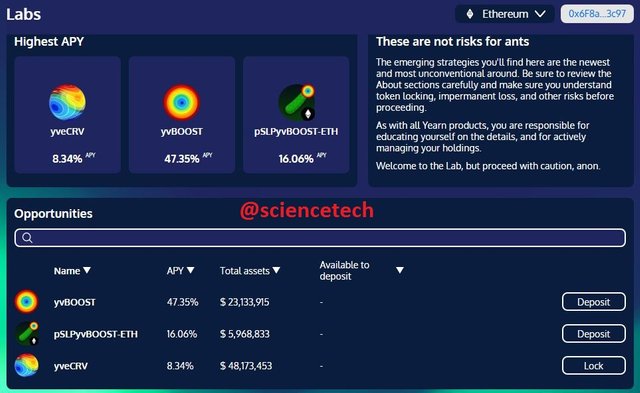
SETTINGS
the setting page is used to change the user interface to the taste of the user
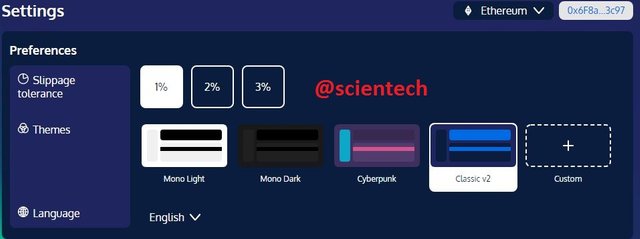

3. What is collateralization in yield farming and what's its function.
Collateralization can be defined as the use of a valuable asset to secure a loan. The valuable asset that the users use to secure a loan has to be greater than the amount of the loan. The purpose of this collateralization is if the borrower fails to pay back the loan, the lender can seize the valuable asset or may decide to sell it to offset the loss.
For proper understanding. When you go to the bank to borrow a loan, you have to make available collateral that is higher than the amount you want to loan and the assets can either be a house or a car, or land.
Every platform that lends out loans always has a collateralization ratio and they vary. If a collateralization ratio is given as 200%, it means that it's 2times worth the amount he/she wants to borrow.
The main function of collateral is to provide the lender with security against default on a loan. If the borrower defaults on the loan, the lender can seize the collateral and sell it to gain its losses.

4. At the time of writing your assignment, what is the TVL of the DeFi ecosystem? What is the TVL of the Yearn Finance protocol? What is the Market Cap / TVL ratio of the YFI token? Show screenshots.
TVL of the Defi Ecosystem :
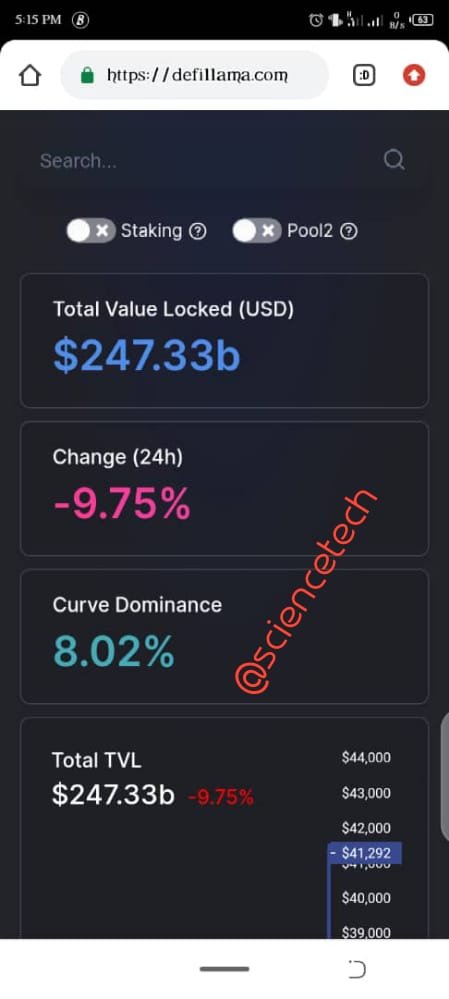
How to get the TVL (Total Locked Value) of the Defi Ecosystem :
To get the Total locked Value of the Defi ecosystem, you ascertain the total assets locked in the Ecosystem and then multiply this value by their value
The total Locked value of the Defi Ecosystem, is $247.33B
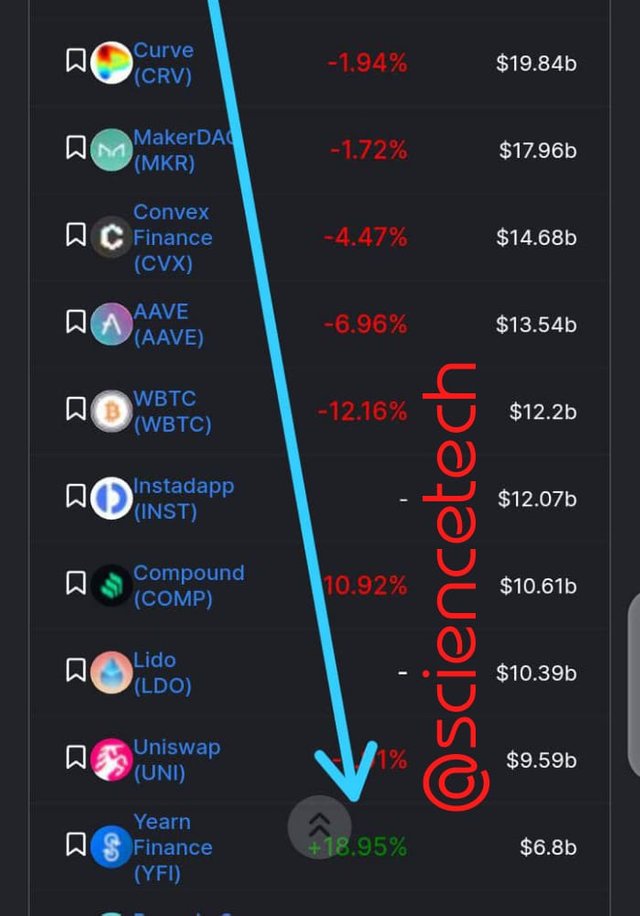
ii.) The total locked value of the yearn finance protocol like we see in the rankings is : $6.8B
B.) Market Cap, TVL and TVL ratio of the Yearn finance token :
The market cap of the yearn finance token as of today, is $892, 491,813 while it's TVL is at $6,905, 420, 545
The TVL ratio is given as, the ratio of the market cap, to the TVL which is $892,491, 813/$6, 905, 420, 545
=0.123
The TVL ratio of the YFI token is 0.123
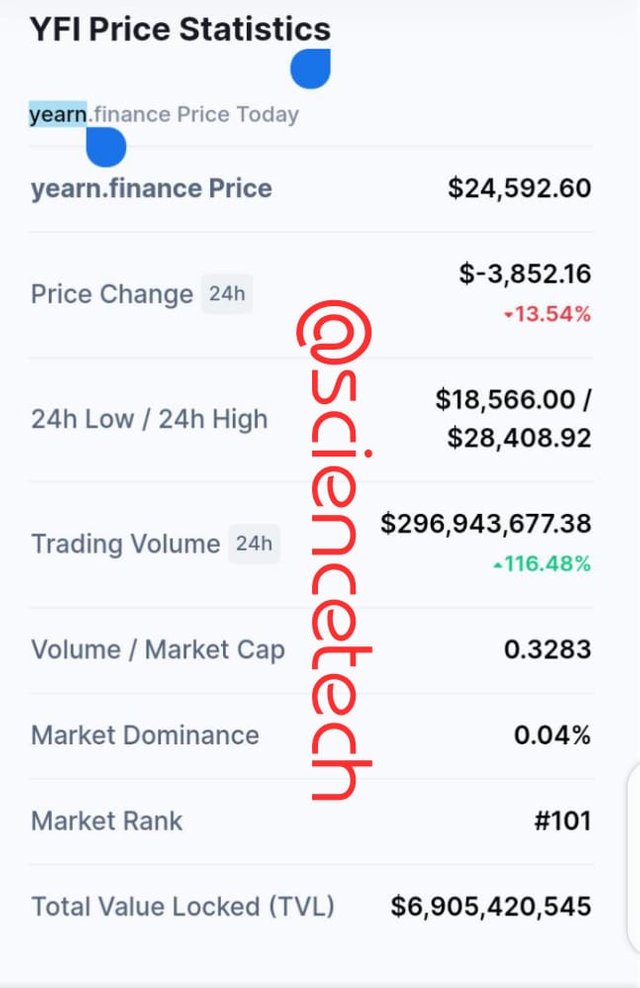
4.1 The YFI token, is it overvalued or undervalued? State the reasons.
When it comes to being over valued or under valued, the YFI token is undervalued due to the fact that this ratio shows that buyers are in hold of the market and there is supposed to be a volatile bullish trend in the market to enlarge the value of this token and create a better basis for it

5.) If on August 1, 2021, you had made an investment of 1000 USD in the purchase of assets: 500 USD in Bitcoin and the remaining 500 USD in the YFI token, what would be the return on your investment in the actuality? Explain the reasons.
Checking the return on investment of Bitcoin and YFI tokens with each bought at $500 at august 1st.
First the price ranging from August 1st to December 4 is about, $46,000 and now at $48,000
Now applying this the $500 worth of BTC we have an increase of $21.5
ROI =$21.5/$500×100
ROI =4.3 %
Its an increase too
Going over to YFI token we'll follow same procedure and it would be given as $40,000 to $26,000
Applying it to the 500$ worth of YFI we'll have $175 reduction
ROI=$175/$500×100
ROI= 35%
Its a decrease

6. What are the risks of yield farming and give reasons for your answer.
Yield farming is a way to make passive income or profit and it is also a way for users to lose money. There are different risks involved in yield farming and I will be discussing them below.
a.) Smart contracts risk:
this is one of the risks involved in yield farming. Although they are often known as a secured and reliable way to process deals and transactions. It is used to fight corruption and avoid human errors as everything is done automatically in compliance with the conditions in the contract.
A smart contract can have bugs like any computer code. Developers always do their best to make sure the project work as it ought to. But they sometimes overlook small errors that hackers may use to drain the money from the project. Thereby making users who supplied money to the protocol lose their capital.
b.) Traders risk
Traders can also suffer an impermanent loss of assets when they add liquidity of unstable coins or assets into a liquidity pool. When this happens, the trader will suffer an impermanent loss of his assets. This loss may be permanent when the trader chooses to withdraw his assets at a particular period.
c.) High gas fees:
Traders are at risk of paying high fees for any little thing they do on the platform either supplying or borrowing assets.
To avoid these risks, traders need to have a piece of knowledge about the pros and cons of yield farming before going into it to avoid making lots of losses instead of profits

Conclusion.
From this lecture, I've been able to gain much knowledge about yield farming and staking and I'm also able to differentiate between the two of them. I was also able to figure out the risks in yield farming. In a nutshell, users can make more profit in yield farming unlike staking where the profit is not as much as yield farming.
Having explored the yearn finance and been exposed to many interesting features like vault, wallet, labs, and iron bankers where the users can supply assets and also borrow assets. I noticed that in supplying and borrowing assets, the gas fees charged are very high and it can pose a risk to the traders.
I also gained knowledge about what collateralization is and its functions, its importance to the lenders or lending platforms.

cc
@imagen
